Basket Subtotal ( 0 Item ) :
$0.00Table of Contents
Comprehensive Guide to Perfume Notes and Their Types
Each perfume smells unique and evokes a different experience. In fact, the perfume you use can also be tied to your personality. People can even recognize your arrival at events by the scent of the perfume you use frequently.
Once you understand the concept of perfume notes, it can simplify the process of finding fragrances that match your preferences and personality.
Our detailed breakdown of fragrance notes and their types will help you make better decisions when buying your ideal perfume.
What is a Perfume Note?
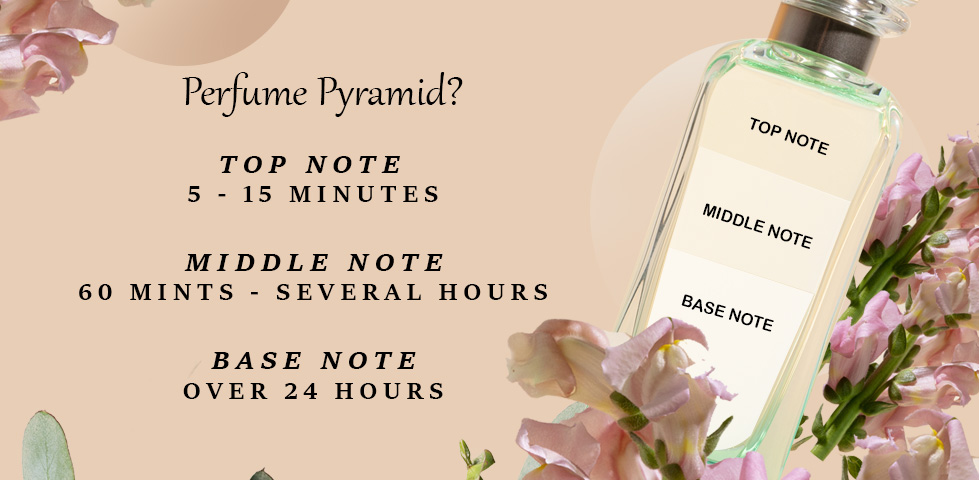
Perfume notes are individual scents with a unique smell. Perfume manufacturers mix three notes to invent a different perfume with a unique smell that evokes different experiences. This is similar to how new colors are formed when combining two to three individual colors.
Perfume notes are categorized into three categories according to how strong their smell is and how fast their volatilization process is.
1. Top Note
The top note is also known as the headnote. It’s about 20% - 40% of the scent of perfume.
They are light and fresh and greet you with a refreshing and cheerful smell that immediately makes a strong impression of a good perfume.
However, the top note is quicker to volatilize, and its smell fades within 5 to 15 minutes of the perfume being applied. Common top notes include Peppermint, lemon, bergamot, lime, rose, and jasmine.
2. Heart Note
The heart note, also known as the middle note, is stronger than the top note and accounts for about 30%—50% scent of the perfume. It emerges as the top note begins to fade.
Heart notes are richer, more complex, and offer greater depth in their aroma. These notes take longer to evaporate and typically last 60 minutes or several hours.
The popular heart notes include strawberry, Ylang-Ylang, Thyme, Lavender, Ginger, Clove, and Nutmeg.
3. Base Note
The base note, which is the last scent you’ll notice after the top and middle notes, lasts the longest, often 24 hours depending on the type of perfume. It makes up about 5%—15% scent of the perfume.
Its aroma is deep, heavy, and rich, with complex scents. Sandalwood, Amber and Vanilla are common base notes (or bottom notes) used in perfumes.
Interaction Between Perfume Notes
The way different notes interact shapes how we experience a fragrance.
Heart notes and base notes:
Heart notes can change how base notes smell as the fragrance settles. For instance, floral heart notes paired with woody base notes might make the base feel warmer or softer.
Top notes and heart notes:
Top notes also impact heart notes. A bright citrus top note can add energy to a rich floral heart, creating an evolving scent journey.
Understanding and Identifying Your Favorite Perfume Notes

Finding your favorite perfume note can feel tricky. You might check the list of notes on the packaging or product description, but it’s not always straightforward.
For instance, if you prefer perfumes with “white floral” notes, you’re dealing with a broad fragrance family. White floral scents include jasmine, gardenia, tuberose, ylang-ylang, orange blossom, and magnolia.
Different perfume brands combine these notes in unique proportions, meaning the same “white floral” description might smell very different from one perfume to another.
So, even if you spot “white floral” in a new perfume's description, it might not match the exact scent you love.
Here’s how to pinpoint your favorite perfume notes with ease:
-
Learn about fragrance families: Instead of focusing on individual notes, explore fragrance families like “white floral,” “citrus,” or “woody.” This will give you a better understanding of the general scents you enjoy.
-
Research specific perfume models: Look up the exact notes in a perfume you already like. Then, search for other perfumes with similar compositions.
-
Test before you buy: Many brands offer samples or miniatures, allowing you to try the perfume before committing. Use these to confirm if the scent matches your preferences.
-
Refine through experience: Over time, as you experiment with different perfumes, your sense of smell will become more attuned. You’ll naturally identify the specific notes you prefer.
With a bit of research and trial, finding your signature scent will become much easier and more enjoyable.
Popular Fragrance Families, Subfamilies, and Their Notes
Within each family of fragrance notes, there are subfamilies. For example, the Floral fragrance family has a subfamily of “Fruity Floral.”
This subfamily mixes the fruit scent elements from fruit notes like coconut, strawberry, mango, peach, cherry, and others with the floral notes that come from flowers.
Within each subfamily are individual notes like “rose” and “orchid” in fruity floral.
Floral:

Floral family perfume notes smell like fresh flowers when you walk into the garden.
If they’re mixed with fruit notes, they’ll smell like the sweetness of fruits and desserts, and they'll also be romantic.
Subfamilies:
-
Fruity Floral
-
Floral
-
Soft Floral
-
Floral Oriental
-
Soliflore
-
Floral Amber
-
Floral Bouquet
Common notes:
-
Rose
-
Jasmine
-
Lily
-
Gardenia
-
Peony
-
Orange Blossom
-
Tuberose
-
Violet
-
Iris
-
Freesia
-
Magnolia
-
Lily of the Valley
-
Narcissus
-
Frangipani
-
Chrysanthemum
-
Heliotrope
Oriental:

They have a scent that resembles the spices like you’re standing in the spice market.
Think of the warm, inviting fragrance of cinnamon and cloves filling the air. The aroma is both soothing and delicately warm that leaves a gentle and comforting impression.
Subfamilies:
-
Soft Oriental
-
Oriental
-
Woody Oriental
Common Notes:
-
Vanilla
-
Myrrh
-
Anise
-
Frankincense
-
Tonka Bean
-
Benzoin
-
Styrax
-
Oponax
-
Cinnamon
-
Patchouli
-
Sandalwood
Woody: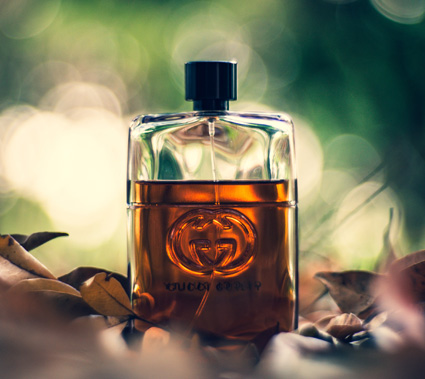
As the name suggests, the woody fragrance family notes resemble the forest, like the smell of pine trees, cedarwood, and sandalwood, and they are also warm.
Subfamilies:
-
Woods
-
Mossy Woods
-
Dry Woods
-
Aromatic Herbs / Fougère
Common Notes:
-
Sandalwood
-
Cedarwood
-
Vetiver
-
Patchouli
-
Oakmoss
-
Birch
-
Guaiac Wood
-
Amber
-
Leather
Fresh:
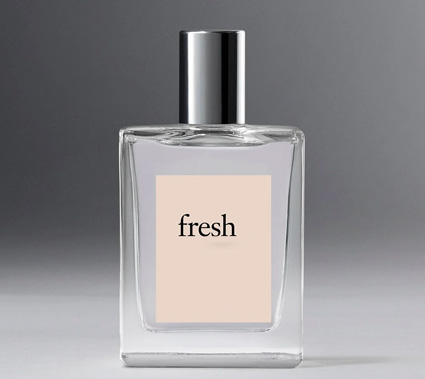
Fresh perfume notes have a sharp, nature-like smell, like you’re taking a walk in the morning near the ocean.
Subfamilies:
-
Citrus
-
Aquatic
-
Green
-
Aromatic
Common Notes:
-
Lemon
-
Lime
-
Bergamot
-
Grapefruit
-
Mandarin
-
Basil
-
Mint
-
Cucumber
-
Sea Notes (Marine)
Citrus:

They smell like freshly peeled oranges and are flavourful and energetic.
Subfamilies:
-
Fruit/Citrus
-
Green Citrus
-
Citrus Floral
-
Citrus Woody
-
Citrus Aquatic
-
Citrus Spicy
-
Citrus Fruity
Common Notes:
-
Lemon
-
Lime
-
Orange
-
Grapefruit
-
Bergamot
Green:

They’ll smell like leafy and the outdoor smell or smell of trees.
Subfamilies:
-
Fresh Green
-
Aromatic Green
Common Notes:
-
Galbanum
-
Basil
-
Sage
-
Mint
-
Fresh-cut grass
-
Violet leaves
-
Cucumber
-
Green apple
Amber:
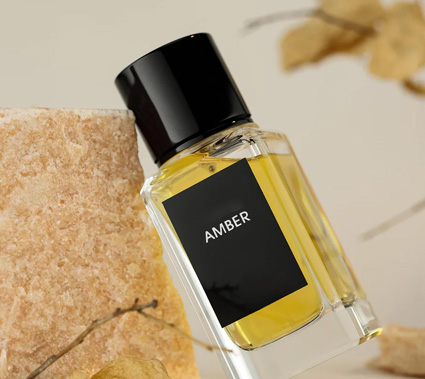
Think about the burnt sugar or caramel or the smell of spices.
Subfamilies:
-
Woody Amber
-
Soft Amber
Common Notes:
-
Vanilla
-
Myrrh
-
Benzoin
-
Labdanum
-
Tobacco
-
Spices
Spicy:
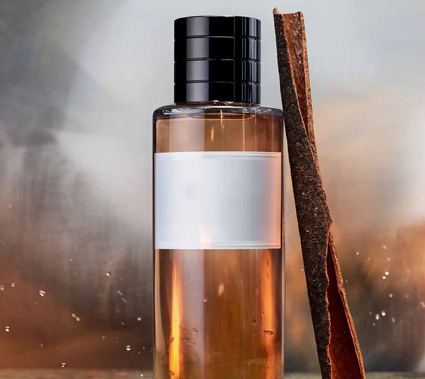
The spicy fragrance family is the same as the smell of different spices used in the dishes.
Subfamilies:
-
Warm Spices
-
Cool Spices
Common Notes:
-
Cinnamon
-
Clove
-
Nutmeg
-
Pepper (Black, Pink, White)
-
Cardamom
-
Ginger
Wrap Up
Perfume notes are the distinct "flavors" of a scent and each offer a unique aroma profile. Some notes are stronger, with a more intense and long-lasting fragrance, while others are lighter and more subtle.
Perfume brands expertly combine these notes to create innovative and captivating fragrances. With this understanding, you can explore further and decide to choose the perfect perfume that suits your style.










Leave us a comment